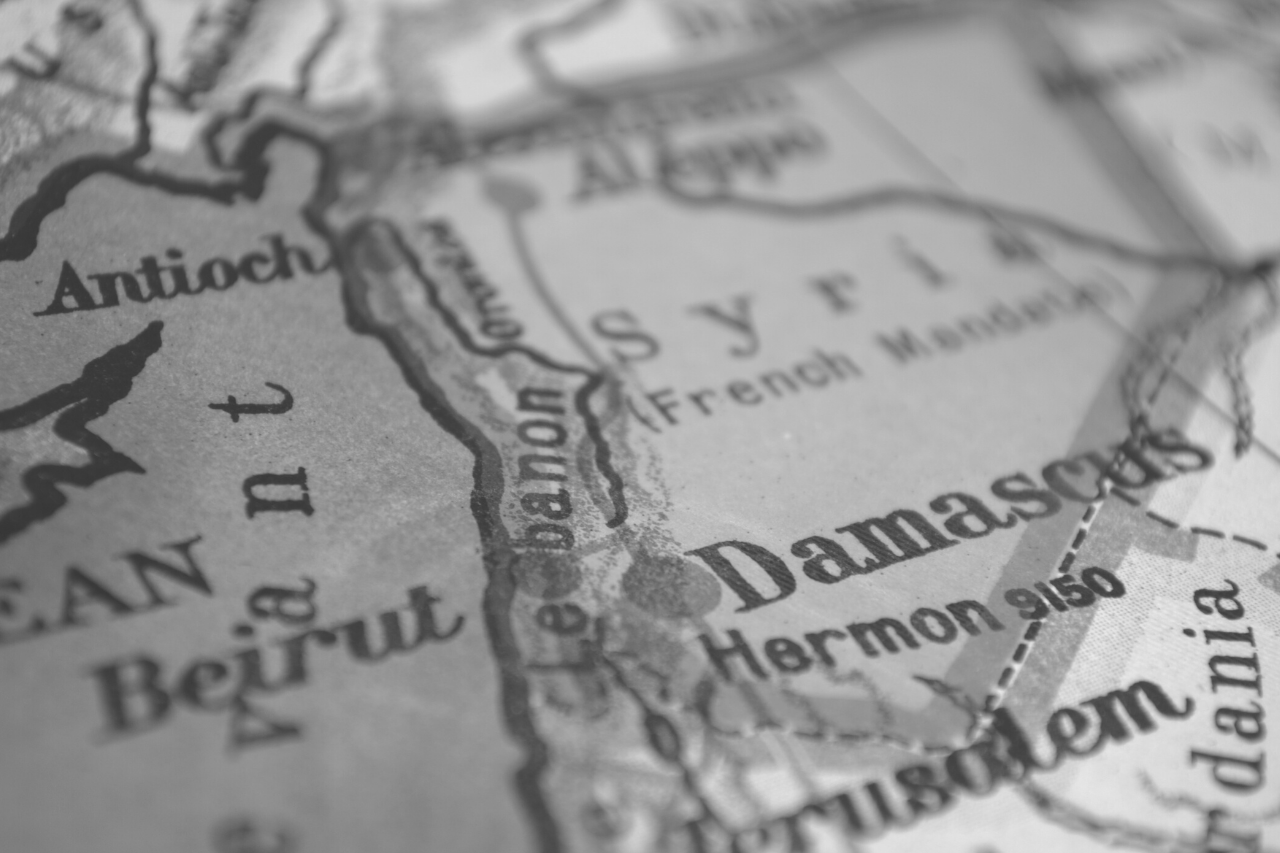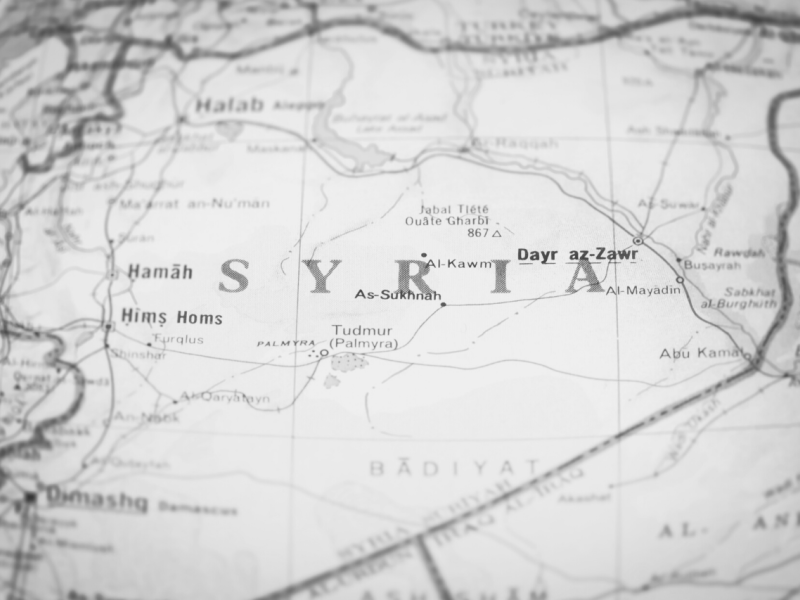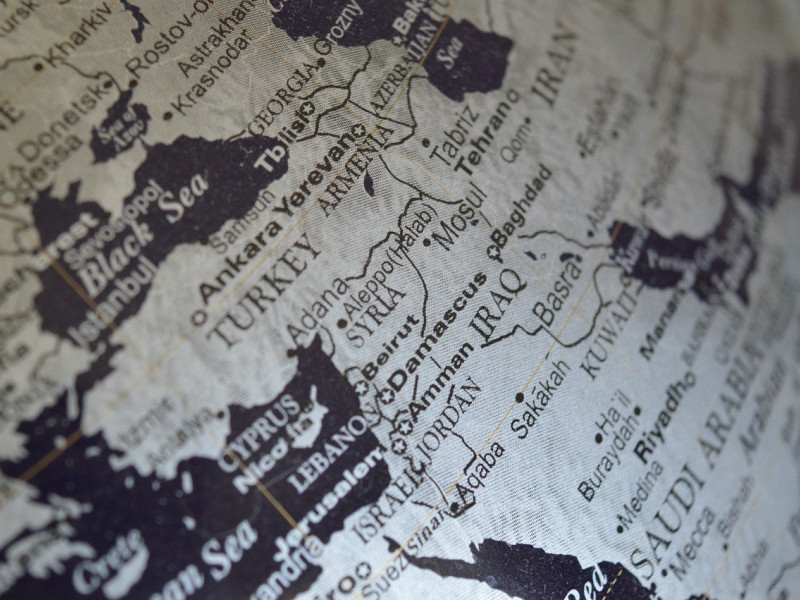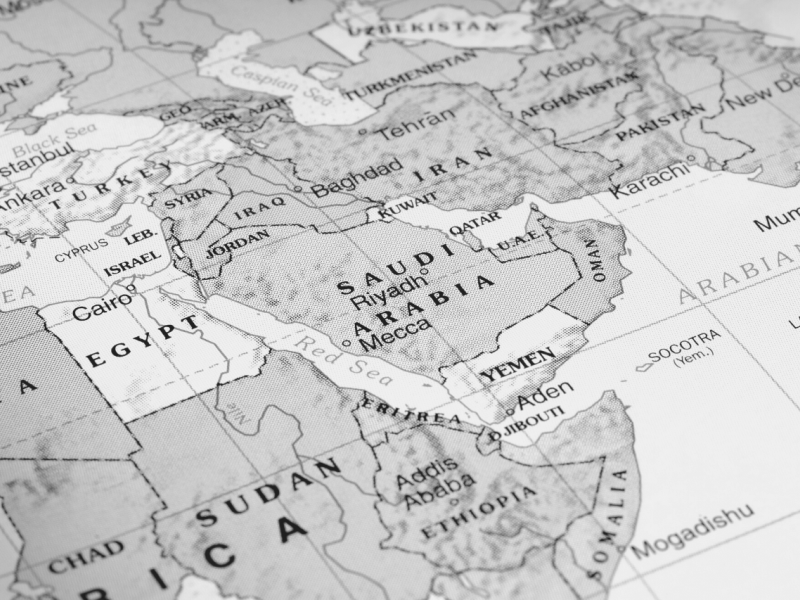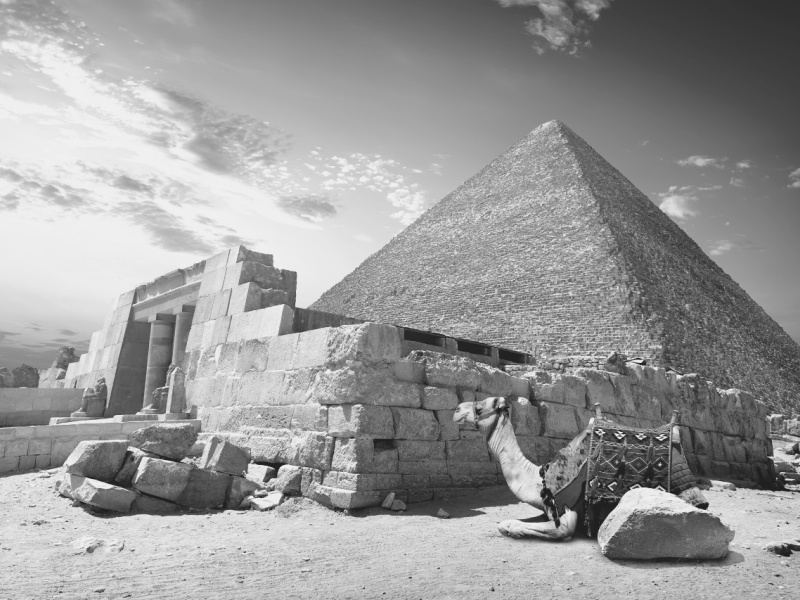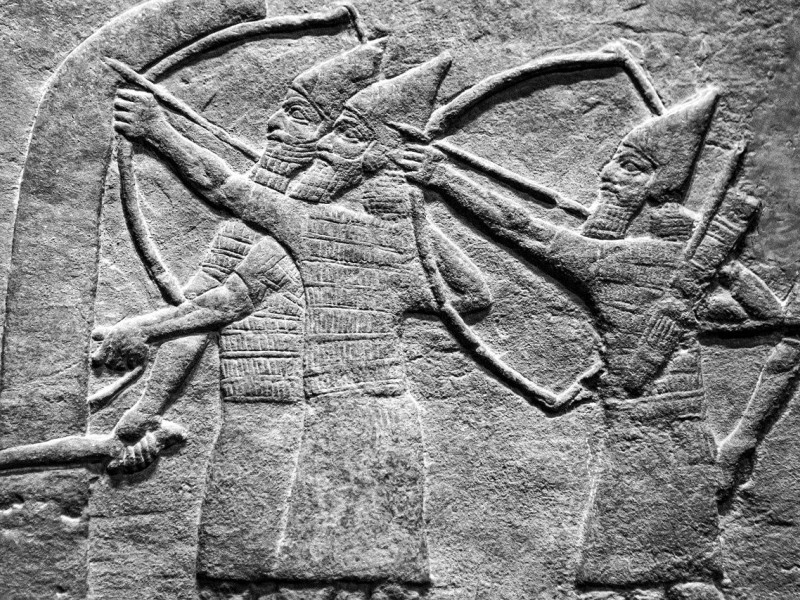Damascus' History: Discovering the Secrets of the Pearl of the East
Damascus' history reveals the secrets of the city known as the Pearl of the East, referring to the city of Damascus, the capital of Syria. It has earned the title because of its beauty and freshness. Found in the southwestern part of Syria, Damascus has won the hearts of travelers, including Mark Twain in 1867.
Damascus is taken from the word Dimashka, which implies that the beginnings of Damascus return to a time before history. Some people call it al-Sham, which means “the left” or “the north.”
It probably signifies a direction toward the Arabian Peninsula. Another description of the city is “The Fragrant” because of its freshness from the orchids and gardens around it, which gives a vivid perfume to the city. Around 75 percent of the inhabitants of Damascus are Sunni Muslim. The rest may be Christians or other denominations.
You can visit the most prominent St. Paul Cathedral when you get there, as well as the ancient Great Mosque.
History of Damascus
You may notice that Damascus is well recognized as an ancient city, although the exact date when settlers arrived is unknown.
According to some researchers, there was an urban center in the area in the fourth millennium B.C.E. based on the pottery that has been found in the Old City, and a scribbling “Damaski” was discovered in a clay tablet dating back to the third millennium BCE.
When Was Damascus Founded?
Nobody knows the exact date of the foundation of the city, but it has been considered as one of the oldest continuously inhabited cities in the world. Some reports say people first settled in the city in the second millennium BC. The location of Damascus was first accurately written on a tablet with hieroglyphic writing found in Tell el- Amarna in Egypt. According to sources, Damascus was part of the regions subdued by Thutmose III in 1490 BCE.
Later on, the city was recognized as the capital of Aramaea, a region found in a strategic location on a plateau 2230.97 feet above sea level and about 49.7 miles from the Mediterranean Sea. Discovering the history of Damascus will lead you to significant material evidence from that era. It was a stone slab showing a winged sphinx, which was discovered during an excavation of a mosque.
Ancient Damascus was controlled by the Aramaeans, as shown by the archeologists who have found traces of their legacy in the canal system. These were evident long before the establishment of Islam.
Later on, Damascus was subdued by foreign conquerors like the Assyrians, Babylonians, Persians, and the Romans in the 1st year AD. Alexander the Great also defeated the city in 333 BCE, after which the city was acknowledged as part of the Hellenistic world for almost 1000 years. It was then that Damascus was given a new image as a metropolis.
The Umayyads built the Great Mosque of Damascus on the place where the Byzantine Church of St. John and the Aramaean sanctuary of Hadad were located. In addition, Damascus in the bible was mentioned when Saul of Tarsus was walking on a road, and he heard the voice of God asking why he was persecuting the Christians.
He got blinded until he humbled himself and eventually became the most passionate of the disciples. Damascus was Christianized together with the rest of Syria in the fourth century and subsequently became a vital military gate for the Byzantine Empire. You could identify Roman Damascus later on as it was built and then progressed with a theological and doctrinal background.
Damascus as an Islamic City
The presence of the Roman Empire has introduced the city to the Christian faith during the era of medieval Damascus, but the Islamic faith started growing in many Arab countries at that time as well.
Hence, when the Islamic faith was introduced to Damascus, the Muslims tried to transform the city by setting up the center of the Umayyad Caliph rule. You could see the fast transition of power at that time.
The Great Mosque of Damascus, for example, was a perfect model of Islamic architecture. It showed intricate designs and well-adorned walls suggestive of picturesque buildings, villages, and a fancy backdrop.
Battles had been fought between the Umayyads and the Abbasids. The Umayyads were defeated by the Abbasids in 750, and an urgent change in the country was spearheaded by the new rulers. The Abbasids moved to Baghdad and settled there, making the city its capital.
Thus, Damascus was considered a provincial town with less economic prominence, while the buildings built by the Umayyads were burnt and destroyed. You now have a picture of Damascus in its dark times. Damascus did not improve its sovereignty and was moved to Cairo in the ninth century.
In that era, battles had to be won until a powerful Turkish military commander or emir, Nur al-Din ibn Zangi, captured the city in 1154. A revival happened, leading to the establishment of new buildings, forms of architecture, and spaces for immigrants.
Damascus changed into a vital religious and educational center, and emirs planned to build religious colleges or madrasahs in the city, as well as funerary domes. At that time, the Ayyubid leadership was settled around the Great Mosque.
You could perhaps imagine how hard it was for the Syrians to live when invasion after invasion occurred in the land, just like the devastation caused by the Mongol attack of 1260. This attack led to the defeat of Syria and its direct dependence on the Mamluks.
What happened to Damascus at that time was fascinating because it was chosen as the seat of sultan’s deputies in Syria. This period was followed by economic prosperity, which happened sometime in the 14th century after the end of Mongolian rule.
Moving on, Damascus was used as a camp for the Muslim struggle against the Crusades, and it had to be vigilant not only against battles but against a plague as well. The city suffered two disasters during the Mamluk period.
First was the plague or Black Death from 1938 to 1949. It killed as much as half of the city’s population. Second was the plunder of the city by Timur, together with his order to deport skilled workers to his capital of Samarkand or present-day Uzbekistan. Could you imagine the challenges these events posed for the people of Damascus?
The Ottoman Period
With the coming of the Ottoman dynasty, the people of Damascus lost their political influence, but their commercial significance remained. Trade commenced between the Middle East and the Balkans.
The area’s economic progress was stimulated by the hajj or pilgrimage season. Muslim leaders at that time were geared toward the mobilization of activities to secure the hajj and introduce urban centers, particularly in Damascus on the road from Anatolia to Mecca.
Midhat Pasa, the incomparable Ottoman reformer, made community enhancements as the lead representative. He advocated for road expansions and further developed sanitation.
In the mid-20th century, the Damascus–Medina rail line, which shortened the explorers’ trip to five days, was designed by German architects. During World War I, Damascus was made the consolidated central command of the Ottoman and German powers.
The Making of Modern Damascus
The autonomy of the Kingdom of Syria was momentary. During World War I, European forces had made dealings to divide among themselves the regions of the Ottoman Empire.
Syria was coercively positioned under French rule, and Damascus was assigned to Gen. Henri Gouraud on July 25, 1920. Damascus opposed the French takeover, but the decision proceeded until mid-1927.
Another metropolitan arrangement was quickly set up that brought about a cutting-edge private cordon around the Old City, successfully isolating it from al-Ghūṭah, where revolts consistently originated. In this modern city, European social standards straightforwardly rivaled conventional ones.
Syria’s years under the French order saw serious political struggle, socialism, and—most importantly—Arab patriotism. Damascus residents, alongside their comrades, battled for their nation’s freedom and the more extensive objective of a solitary Arab state. Truth be told, this clamor for freedom was not an easy undertaking.
The city has changed rulers on many occasions throughout its history. Each leadership left echoes behind that turned out to be essential for the city’s rich embroidered history. The actual city, however, flourished as it does today at the center of a free Syria.
Did you notice that Damascus’ rich history is alive and continues to thrive? Despite its limited freedom, the city is doing its best to sustain itself. It has been through several invasions and has been defeated many times, but it continues to survive. The Umayyad Mosque is Islam’s most incredible mosque, behind only the mosques in Mecca and Medina.
The mosque site was once home to a sanctuary of Syria’s antiquated Aramaean individuals. Then, at some point, it was home to a Roman sanctuary. Meanwhile, it was a Christian church in the time of Constantine.
Close to the mosque’s north entryway sits the burial place of Salah al-Din ibn Ayyub (Saladin), the amazing champion ruler who crushed the Crusaders in a few conclusive fights and drove them away.
An interesting piece of history can be found in Souq al-Hamidiyya, where an old road was changed into an enthusiastic covered market during the late-19th century Ottoman period. The marketplace is just one of the Old City’s favored places where dealers traded spices, desserts, carpets, and all manner of attractive products.
You can visit the conventional homes in Damascus, and you’ll see its simplicity from outside, yet inside, they work hard on the rich patio gardens and creatively arrange the furnishings.
For example, the mid-18th century Azem Palace was once the home to a leader in Damascus. However, it’s now home to the Museum of Arts and Popular Traditions. Damascus continues to function as a pole of attraction for political forces, economic interests, and rural Syrians seeking a better life in the capital. It offers opportunities for city life if you prefer living within the hustle and bustle of the city.
Contemporary Damascus is a modern metropolis, and just like other major cities, it comes with many problems found in cities around the world. The physical limits of the land and limited water sources are just some of the common problems you can encounter in the city. For urban lovers, you can experience here the fragile and invaluable heart of the city.
Still, despite rapid modernization, as well as periods of neglect and greed throughout the millennia, Damascus has thus far managed to survive with its unique character. It is said that Damascus is the Pearl of the East because it always survives from the rubble. It remains beautiful and calm despite perennial invasions and defeat.
21st Century in Damascus
Military discord didn’t end in the 21st century for Damascus. In January 2012, clashing between the army and the rebels occurred in the outskirts of Damascus. It prohibited the people from going out of their homes, particularly when the fighting intensified.
Local residents were warned of shrapnel and bullets that hit their homes overnight. Such military action is still present in modern Damascus, which the government would like to control.
In some cases, there are bombings in other suburbs orchestrated by unruly rebels who want to take control of the government, believing that they could lead the nation better. Intense exchanges of assault-rifle fire prolonged the clash, which was spearheaded by more retaliations from both parties.
Conclusion
Damascus is a city known as the Pearl of the East, the capital of Syria. Located in the southwestern part of Syria, Damascus has won the hearts of many travelers throughout history because of its unrivaled beauty and rich history. Damascus comes with several titles, but its strength is found in its resilience in the face of adversity.
It is not unknown that so many rulers have wanted to take control of the city, but Damascus rose up from defeat and built its economy for its people. You may perhaps realize that the beauty of Damascus lies in its fidelity and courage.


